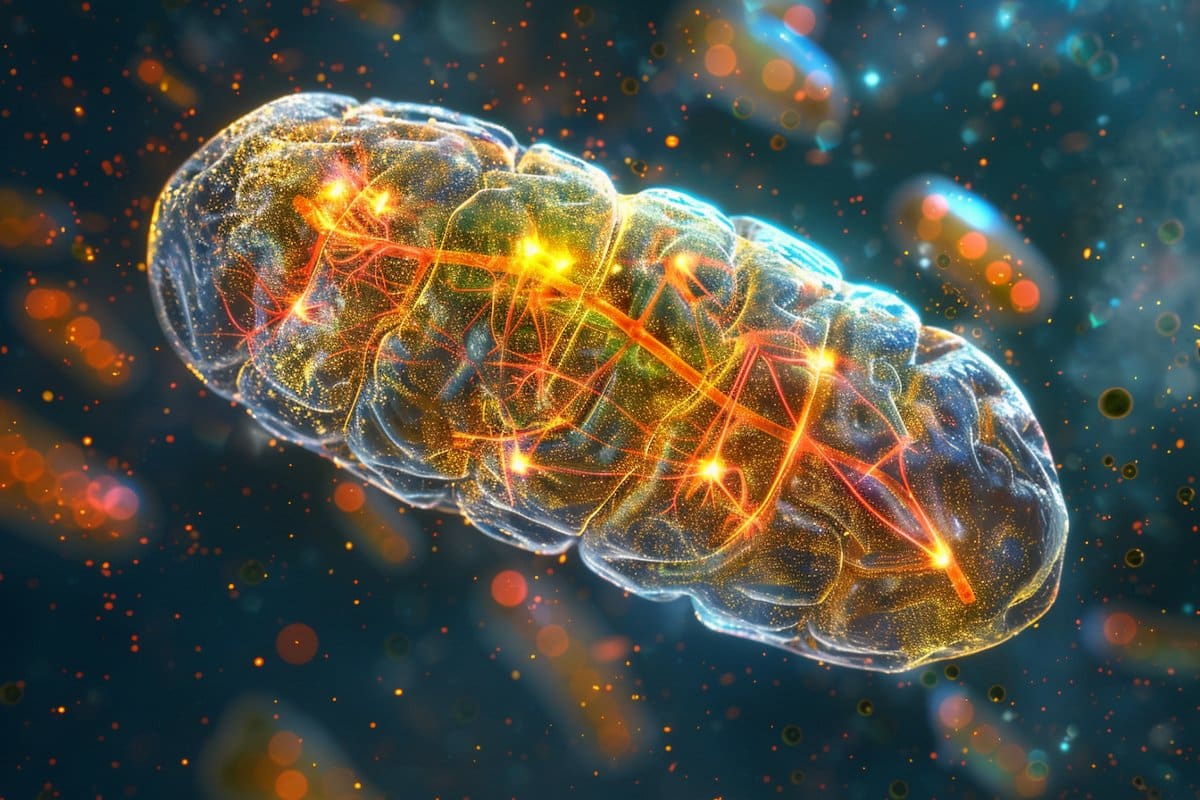Summary: Researchers made a groundbreaking discovery about the maturation process of adult-born neurons in the brain, highlighting the critical role of mitochondrial fusion in these cells. Their study shows that as neurons develop, their mitochondria undergo dynamic changes that are crucial for the neurons’ ability to form and refine connections, supporting synaptic plasticity in the adult hippocampus.
This insight, which correlates altered neurogenesis with neurological disorders, opens new avenues for understanding and potentially treating conditions like Alzheimer’s and Parkinson’s by targeting mitochondrial dynamics to enhance brain repair and cognitive functions.
Key Facts:
- Mitochondrial fusion dynamics in new neurons are essential for synaptic plasticity, not just neuronal survival.
- Adult neurogenesis occurs in the hippocampus, affecting cognition and emotional behavior, with implications for neurodegenerative and depressive disorders.
- The study suggests that targeting mitochondrial fusion could offer novel strategies for restoring brain function in disease.
Source: University of Cologne
Nerve cells (neurons) are amongst the most complex cell types in our body. They achieve this complexity during development by extending ramified branches called dendrites and axons and establishing thousands of synapses to form intricate networks.
The production of most neurons is confined to embryonic development, yet few brain regions are exceptionally endowed with neurogenesis throughout adulthood. It is unclear how neurons born in these regions successfully mature and remain competitive to exert their functions within a fully formed organ.

However, understanding these processes holds great potential for brain repair approaches during disease.
A team of researchers led by Professor Dr Matteo Bergami at the University of Cologne’s CECAD Cluster of Excellence in Aging Research addressed this question in mouse models, using a combination of imaging, viral tracing and electrophysiological techniques.
They found that, as new neurons mature, their mitochondria (the cells’ power houses) along dendrites undergo a boost in fusion dynamics to acquire more elongated shapes. This process is key in sustaining the plasticity of new synapses and refining pre-existing brain circuits in response to complex experiences.
The study ‘Enhanced mitochondrial fusion during a critical period of synaptic plasticity in adult-born neurons’ has been published in the journal Neuron.
Mitochondrial fusion grants new neurons a competitive advantage
Adult neurogenesis takes place in the hippocampus, a brain region controlling aspects of cognition and emotional behaviour. Consistently, altered rates of hippocampal neurogenesis have been shown to correlate with neurodegenerative and depressive disorders.
While it is known that the newly produced neurons in this region mature over prolonged periods of time to ensure high levels of tissue plasticity, our understanding of the underlying mechanisms is limited.
The findings of Bergami and his team suggest that the pace of mitochondrial fusion in the dendrites of new neurons controls their plasticity at synapses rather than neuronal maturation per se.
“We were surprised to see that new neurons actually develop almost perfectly in the absence of mitochondrial fusion, but that their survival suddenly dropped without obvious signs of degeneration,” said Bergami.
“This argues for a role of fusion in regulating neuronal competition at synapses, which is part of a selection process new neurons undergo while integrating into the network.”
The findings extend the knowledge that dysfunctional mitochondrial dynamics (such as fusion) cause neurological disorders in humans and suggest that fusion may play a much more complex role than previously thought in controlling synaptic function and its malfunction in diseases such as Alzheimer’s and Parkinson’s.
Besides revealing a fundamental aspect of neuronal plasticity in physiological conditions, the scientists hope that these results will guide them towards specific interventions to restore neuronal plasticity and cognitive functions in conditions of disease.
About this neurogenesis and neuroplasticity research news
Author: Anna Euteneuer
Source: University of Cologne
Contact: Anna Euteneuer – University of Cologne
Image: The image is credited to Neuroscience News
Original Research: Open access.
“Enhanced mitochondrial fusion during a critical period of synaptic plasticity in adult-born neurons” by Matteo Bergami et al. Neuron
Abstract
Enhanced mitochondrial fusion during a critical period of synaptic plasticity in adult-born neurons
Highlights
- A surge in fusion stabilizes elongated dendritic mitochondria in new neurons
- Synaptic plasticity is abrogated in new neurons lacking Mfn1 or Mfn2
- Mitochondrial fusion regulates competition dynamics in new neurons
- Impaired experience-dependent connectivity rewiring in neurons lacking fusion
Summary
Integration of new neurons into adult hippocampal circuits is a process coordinated by local and long-range synaptic inputs.
To achieve stable integration and uniquely contribute to hippocampal function, immature neurons are endowed with a critical period of heightened synaptic plasticity, yet it remains unclear which mechanisms sustain this form of plasticity during neuronal maturation.
We found that as new neurons enter their critical period, a transient surge in fusion dynamics stabilizes elongated mitochondrial morphologies in dendrites to fuel synaptic plasticity.
Conditional ablation of fusion dynamics to prevent mitochondrial elongation selectively impaired spine plasticity and synaptic potentiation, disrupting neuronal competition for stable circuit integration, ultimately leading to decreased survival.
Despite profuse mitochondrial fragmentation, manipulation of competition dynamics was sufficient to restore neuronal survival but left neurons poorly responsive to experience at the circuit level.
Thus, by enabling synaptic plasticity during the critical period, mitochondrial fusion facilitates circuit remodeling by adult-born neurons.







